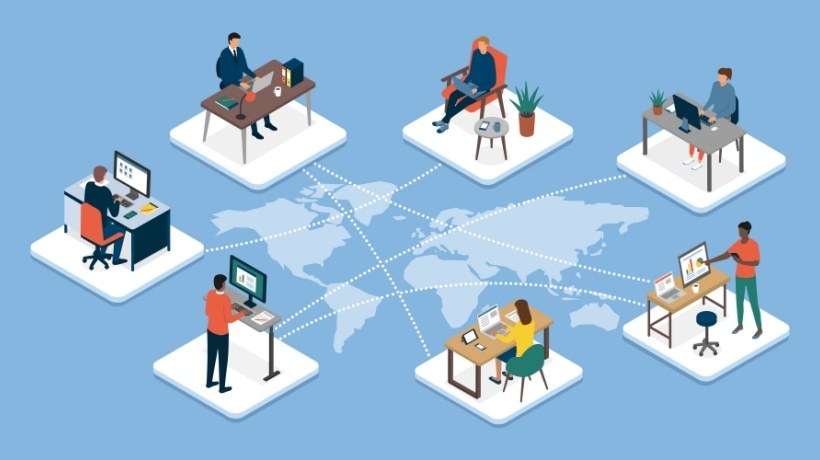How To Resolve Learning And Development Issues, The LMS Way
In an ever-evolving business landscape, employees are the focal point of all learning/ training programs since they are the ones that drive the growth of an organization. Learning and Development (L&D) professionals, naturally, leave no stone unturned to ensure that the workforce remains relevant with the help of timely training interventions.
However, there are several issues that L&D professionals face while trying to develop agile and pertinent training modules for employees. For most of the obstacles though, what works best is a Learning Management System (LMS) that is well-equipped with some superior features to overcome each of the problems.
In this article, we will be looking at some common issues that L&D professionals have to deal with and the LMS features/ functionalities that work to trounce them.
1. Training Becomes Obsolete Within Months
Training employees is essential not just for on-boarding them into the new role, but also for ensuring that their performance is in tune with the organization’s expectations. Besides, to sustain competence and have an edge over competition, employees need to stay updated, always! However, skills become outdated very fast unless they are updated from time to time. So, it’s a given that existing training programs become archaic and are superseded by the need for new ones.
How An LMS Addresses This Issue
While the new staff requires training, the current employees need re-training and this is where an LMS works the best. It helps by sending notifications for expiring training and enables to organize suitable Re-training. Since, an LMS can handle this function automatically, it can really help reduce the time spent on administration by an already busy L&D department. Also, in an increasingly complex world of rules and laws, online training through an LMS is a cost-effective approach for managing compliance requirements as Compliance Training can be leveraged for Performance Improvement and Business Success. LMS compliance courses are consistent, allow for re-training to be automatically scheduled, provide for proper certification for possible audits and ensure that only concerned staff across different locations is trained.
Similarly, an LMS also facilitates CPD or Continuing Professional Development to manage the professional development of employees. It has flexible modules designed to create and manage CPD programs that help maintain, update and enhance employee knowledge, skills and performance to ensure that they deliver appropriate results. That it is crucial to Cultivate a Continuous Learning Mindset for Continuing Professional Development (CPD) goes without say.
Competency Management too is taken care of by an LMS by analysing skills gap and recommending learning solutions to correct them.
2. Learners Are Not Motivated And Engaged
One of the main premise on which the success of a learning program depends is how much is it able to engage the learners. This is where many courses fail because they are unable to motivate or engage learners.
How An LMS Addresses This Issue
An LMS works here because it offers Gamification - one of the best known techniques for learner engagement (Learn how a leading health club group brought about Total Learner Engagement with a Responsive, Gamified LMS). Gamification can truly enhance the learning experience as a complement to traditional Instructor-Led Training (ILT), Virtual Classroom and eLearning and inject some fun into the training.
In the age of social media, an LMS also provides unique ways for people to learn from one another via Social Media and Knowledge Collaboration tools. It creates an informal learning environment to help learners go beyond routine training to interact with peers and share knowledge. User Generated Content or UGC, another stellar feature of an LMS is useful when it comes to engaging the workforce because it gives learners the opportunity to create and contribute their own content.
LMSs designed keeping in mind a learner-centric design, are device agnostic (work perfectly on any device) and boast of accessibility, usability and user’s comfort are capable of delivering a good UX or User Experience –one of the cornerstones of a successful learning program. Speaking of which, Selecting a Learning Management System from the UX Perspective is easy.
3. There Is No Training At The Point Of Need And Employees Have To Wait Until The next Training Intervention
Often, training programs are scheduled as per the convenience of the company rather than the needs of the employees. An employee may find no training intervention when he or she actually requires it, while at work - on the job or otherwise, and would have to wait until the next training session.
How An LMS Addresses This Issue
In today’s fast-paced world, training too requires to keep up by allowing employees to learn on-the-go. An LMS provides learning solutions that work on multiple devices providing Mobile Learning and encouraging a continuous learning experience. This means that employees can learn anytime, anywhere and most importantly when they ‘need’ learning rather than waiting for a formal training session.
An LMS also allows people to learn from one another and share and gain knowledge in an informal manner through Social Learning and Knowledge Collaboration tools.
For those who wish to learn something specific or feel the need for a specific training course, an LMS provides the option of Request Training. This feature equips an employee to request for the desired training program, which then follows a pre-set workflow for approval and assignment.
4. Classroom Training, While Crucial, Sees A Drift Off/ Switch Off After A Short While At The Session
Although classroom training has some strong points, a Brandon Hall Group study points out that it typically takes employees 40 to 60 percent less time to study a particular material via e-learning than in a traditional classroom setting. Chances of employees drifting off from the training content are much higher in classroom training too.
How An LMS Addresses This Issue
A Blended Learning approach (one that combines traditional face-to-face instruction with self-paced learning), that an LMS facilitates, helps employees to get the information they require from online learning modules, when they need, at their pace, by simply picking-and-choosing the learning content that can address their learning needs, beyond the four walls of the classroom.
Further, an LMS' support for standards-compliant (SCORM, AICC and xAPI/ Tin Can) and non-standards-compliant/proprietary courseware, and multiple formats (videos - streamed and uploaded, documents, etc.) ensures that the learner engagement is upheld at all times.
5. ROI Measurement Of L&D Is Tricky
While ROI is a pointer to the success of any investment made by a company, in case of L&D, measuring ROI is easier said than done. It is difficult to justify expenditure for L&D programs because the results cannot always be quantified since the impact is on the intangibles too (like soft-skills, behavior) where it is more difficult to see value.
How an LMS addresses this issue: Features of an LMS like MIS and Reporting work the best when it comes to measuring the ROI because they offer deep insights into how effective the training strategy is, and how well the strategy meets the designated learning goals and objectives. Reporting data also provides better learner management capabilities, as it allows to see who is excelling in which areas and what field needs more focus.
Taking the "intangibles" into account is possible and easy with xAPI, also called as Experience API, that captures and tracks ALL learning activities that happen in the organization, including those that were impossible to track with older interoperability specifications.
6. Multiple Systems For Maintaining And Tracking User Data
Data in organizations often finds its place in multiple locations and there are several issues that arise in the process. Learners sometimes may have to 'sign in' to a bunch of different systems. Also, there may be different systems to maintain and track user data.
How An LMS Addresses This Issue
An LMS with a wide API and Integration library makes it possible to automate some of the routine LMS data exchange tasks by integrating it with the organization's third-party HRIS, HRMS, employee database, or any other system. Syncing data from all these with an LMS offers several advantages such as important employee data getting automatically updated, critical compliance tests automatically scheduled, data from across different platforms available to access complex reports etc.
Also, the SSO or Single Sign-On functionality across all applications eliminates the need for multiple logins and hence, multiple set of login credentials, thereby reducing the burden on the employees to remember a large number of usernames and passwords. All an employee needs is one set of credentials to access various resources in and out of the organization’s network. This centralized identity management allows quick and full control of the login to each user.
7. Getting A Holistic View Of A Learner's Training Within And Outside The LMS
Organizations invest a tremendous amount of time, money and effort in training programs for their employees. But sometimes, employees may already be trained in certain aspects, perhaps from some external organizations, and may not need to take the training course all over again.
How An LMS Addresses This Issue
Not only does an LMS enable organizations to manage their learners' Compliance Training/ Retraining, Competency and CPD easily, an LMS' External Certification module also gives learners the flexibility to add certifications achieved from external sources making every learning, every certification count!. Meanwhile, all of this data is tracked, recorded and reported automatically.
Final Word
In a nutshell, training is one of the most crucial tools in every field today - from sales to marketing to manufacturing to logistics to human resource to engineering to production etc. So, it is an important task on hand for the Learning and Development department that faces legion challenges while imparting the same. A good LMS with its multiple facets is the answer to all of these challenges!








